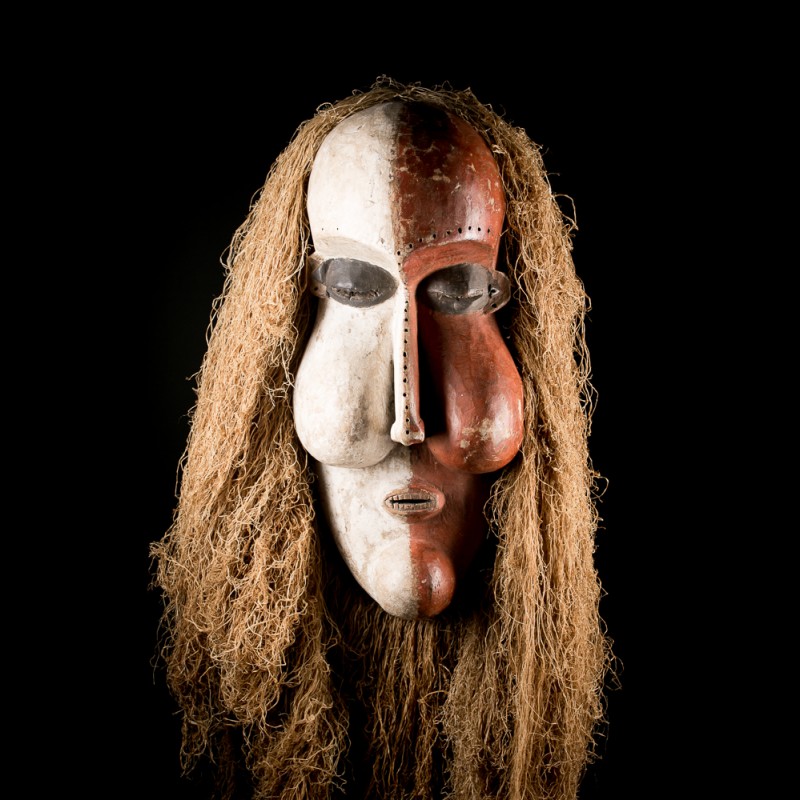

































A major piece of African art, this wooden mask accompanied by its raffia headdress is of extraordinary dimensions. Suku's kakuungu (kakungu) masks are easily recognizable by their drooping cheekbones, their soft and generous curves.
This type of charming mask with a terrifying look, among the Suku as well as the Yaka and the Nkanu, is among the largest masks in Central Africa. The traditional kakungu mask was used during rites of passage and circumcision called mukanda and nkhanda, which are also found in other ethnic groups in the south of the country and in northern Angola.
Protective mask, it ensured the fertility to come of the initiated young men while having a formidable role of threat and appeasement. The use of red pigment on one or both cheekbones is recurrent on masks of this type. The prominent chin, partially covered with white pigment, refers to the beard and light hair of elders with specific powers, such as wizards occasionally choosing victims from among young members of the clan.
The wood used is traditionally a soft wood called mungela or m'tenga. The headdress which accompanies it which can be in leaves or raffia, is called futi.
The African kakuungu mask was the major piece in the paraphernalia of the initiation camp specialist, yisidika. Among the other tools of this specialist are a series of charms that could be used to ensure the well-being of young people.
It was on the day of circumcision that the mask appeared, when the young people left the Mukanda camp. Its primary function was to intimidate suitors and teach them values such as obedience and the respect due to elders. It was kept in a box near the place of initiation.
When the specialist wore this mask, he neither spoke nor sang; an assistant applied tsengwa, a strengthening preparation made from chewed leaves which were spat out on initiates.
Apart from its initiatory function, the kakungu mask was also used for the resolution of crises, to treat male impotence problems as well as sterility in women. Protective mask, he also had to deflect the storms approaching the village.
In the context photo, it is an individual of the Nkanu ethnic group wearing a kakuungu mask with a different style but performing the same function.
The base is included.
Data sheet
You might also like